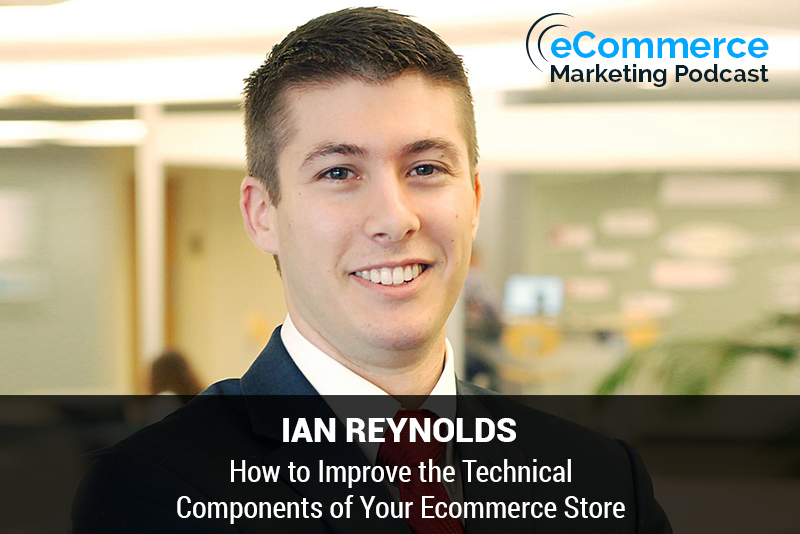
The eCommerce Marketing Podcast walks you through everything that goes into ecommerce marketing — from inbound marketing to paid advertising to conversions. Learn the strategies top marketing experts use to grow their businesses.
Marketing Strategies Revealed in this Episode:
- The most important piece of technology that an ecommerce store should have in place
- Ways to improve the speed of an ecommerce site
- Practical ways to secure an ecommerce site
- Recommended technology tools and resources to improve site efficiency
- Examples of some top ecommerce brands that are leading the way when it comes to a solid and secure technical infrastructure

Episode Title: Technical Infrastructure for eCommerce Success with Ian Reynolds
Host: Arlen Robinson
Guest: Ian Reynolds, Partner and Chief Solutions Architect at Zibtek
In this episode of the eCommerce Marketing Podcast, Arlen Robinson talks with Ian Reynolds about the often-overlooked technical components of eCommerce sites. They delve into critical aspects such as site speed, security, and infrastructure that can make or break an eCommerce business. Ian shares his extensive experience and provides valuable insights on how to ensure your eCommerce site is robust, efficient, and secure.
Key Takeaways:
- Introduction and Ian’s Background (00:20)
- Ian’s journey from startups to acquiring Zibtek and his diverse experience in software and finance.
- Importance of Backups (04:10)
- The crucial role of backups in ensuring eCommerce sites can quickly recover from issues.
- Site Speed and Image Optimization (09:30)
- Using CDNs (Content Delivery Networks) like Cloudflare to improve site performance by delivering optimized images quickly.
- Mobile Optimization (13:50)
- Ensuring a seamless mobile experience by optimizing for different devices and bandwidths.
- Security Best Practices (19:15)
- Leveraging third-party payment processors like Stripe, PayPal, and Authorize.net to securely handle transactions.
- Technology Tools for Efficiency (26:00)
- Automated crawlers and performance monitoring tools to detect and fix errors and improve site performance.
- Lessons from Top eCommerce Brands (33:45)
- Implementing dynamic server scaling and leveraging modular web frameworks to enhance user experience and site performance.
Ian Reynolds is a Partner and Chief Solutions Architect at Zibtek, where he helps businesses of all sizes achieve greater profitability and efficiency through custom software solutions.
Contact Ian Reynolds:
- Website: Zibtek
- Contact Form: Zibtek Contact
For more details and to listen to the full episode, visit our podcast website. Thank you for tuning in to the eCommerce Marketing Podcast!











